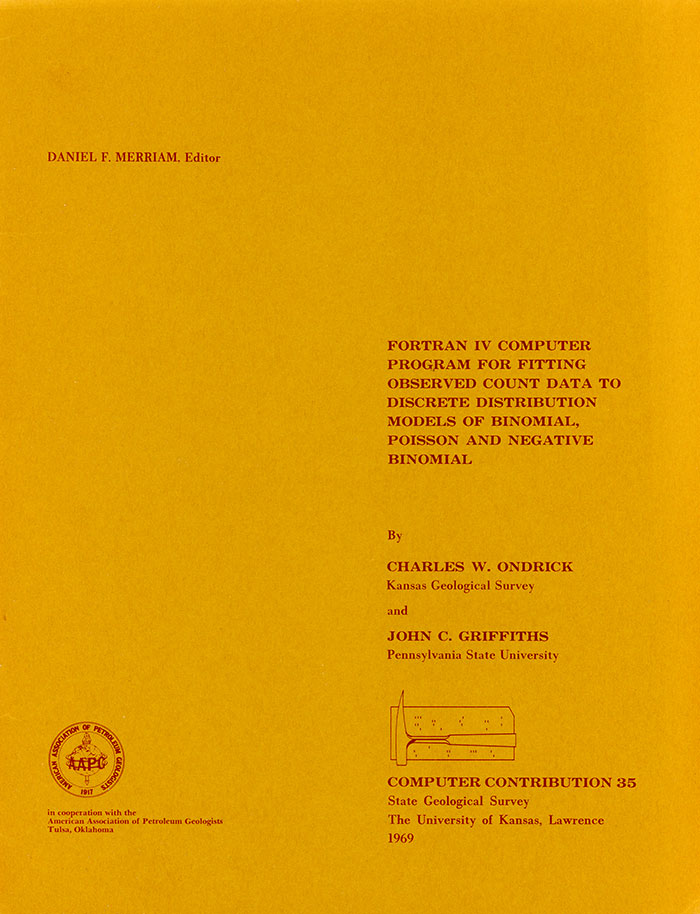
Kansas Geological Survey, Computer Contributions 35, originally published in 1969
1Kansas Geological Survey and 2Pennsylvania State University

Originally published in 1969 as Kansas Geological Survey Computer Contributions 35.
Data may be divided into two distinct types, measurement and count. Measurement data exhibits a continuous range in variation whereas count data varies in discrete steps. The present discussion and computer program is concerned primarily with count data and the positive binomial, Poisson, and negative binomial discrete distribution models.
The types of frequency distributions generated are dependent upon sampling arrangement, measurement technique and distribution of the constituents to be analyzed. Consider a conceptual experiment where the outcome can be thought of as success or failure, for example quartz grain (success) and not quartz grain (failure). Constant probability models such as the positive binomial and Poisson are expected if the following conditions are fulfilled (Student 1919, p. 211):
According to Student (1919), condition three is often unfulfilled. If a point falling on a particular item, for example a quartz grain, decreases the chance of points falling on quartz grains, the positive binomial discrete-distribution model is expected. The negative binomial distribution model, a noncorrstant probability model, is expected, however, if a point falling on a quartz grain increases the chance of points falling on quartz grains. The negative binomial has been called a contagious or epidemic distribution because the occurrence of cases of a contagious disease is clustered, that is if one case is found the chances of tinding additional cases may be increased. The distribution free statistic chi square (Χ2) may be used to test the similarity of the observed to the expected frequency distribution model.
We would like to express our thanks to Mrs Janet Singer, College of Earth and Mineral Sciences, The Pennsylvania State University for her help during development of this program.
Read the PDF version (4.4 MB)
Kansas Geological Survey
Placed on web Aug. 30, 2019; originally published 1969.
Comments to webadmin@kgs.ku.edu
The URL for this page is http://www.kgs.ku.edu/Publications/Bulletins/CC/35/index.html